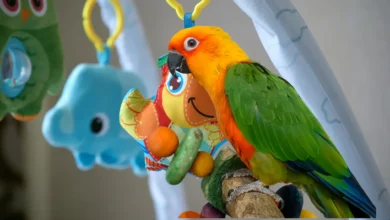
Animal shelters—those bustling places where a wagging tail or soft meow is just a sign that hope is in the air. But behind the “adopt me” signs and the cute puppy eyes, there’s a side of shelter life that rarely gets talked about. Yes, I’m talking about the emotional rollercoaster shelter workers ride on a daily basis. And trust me, it’s not all belly rubs and treats. It’s a little more like a mixture of heartache, exhaustion, and just a pinch of “How did I get myself into this?” Let’s dive in, shall we?
Overcrowding: The Shelter Worker’s Version of ‘Mission Impossible’
Imagine you’re working in an animal shelter. It’s your job to care for animals, make sure they get fed, find them forever homes, and—oh yeah—try to keep everything from falling apart while juggling a hundred different tasks. Sounds like a dream job, right? Well, when the shelter is overcrowded, it’s less “dream job” and more “survival mode.”
Shelters across the world are struggling with overcrowding. There are too many animals coming in, too many heartstrings being pulled, and not enough space for all the wagging tails and fluffballs that need it. Picture this: you’re trying to comfort a nervous puppy, play with a rowdy kitten, and feed a stressed-out bunny, all while figuring out where on earth to put the new rescue cat (who, by the way, has already decided to hide under your desk).
It’s chaos, but in the most adorable way possible. The issue, however, is that it’s not sustainable. The more animals that come in, the more overwhelmed shelter workers get—and let’s not even talk about the emotional toll this takes on them. It’s like trying to organize a rock concert in a room that’s already full of party balloons. The emotional strain on shelter workers becomes painfully evident in moments like these. So does the mental burden on animal shelter staff, which builds with each added responsibility.
Compassion Fatigue: When Your Heart Just Can’t Take It Anymore

Enter compassion fatigue. This isn’t some trendy buzzword or the latest wellness term. Compassion fatigue is a real thing, and it’s what happens when your emotional energy gets drained by constantly trying to give love and care to animals in need. Shelter workers pour their hearts into their work. They comfort scared kittens, they clean up after muddy paws, and they sit with senior pets hoping someone will adopt them. But there comes a point when you’ve given so much of yourself that you start to feel like a human-sized sponge that’s been wrung out too many times.
“I remember one day, a kitten came in that had been abandoned by its owner,” says Carla, a shelter worker who’s been with the shelter for years. “It was so tiny and scared, and I was determined to comfort it. But then another dog came in, and a cat needed food, and I forgot to take a lunch break. By the end of the day, I felt like I’d given all my emotional energy to the shelter and had nothing left for myself.”
This is the invisible toll of shelter work. It’s not just cleaning cages and making sure every pet is fed. It’s emotionally exhausting. So imagine the emotional whiplash when you see a dog or cat get adopted… and then a few days later, another batch of pets comes in, many of them with sad, puppy-dog eyes that need your attention. It’s like a never-ending emotional rollercoaster, but with more fur and fewer seatbelts. The emotional strain on shelter workers compounds each day, and so does the mental burden on animal shelter staff, which often goes unnoticed by the public.
Overcrowding: The Emotional “Whack-a-Mole” Game
When a shelter is overcrowded, it’s like playing a game of emotional “whack-a-mole.” Every time one issue gets resolved, another one pops up. The dogs are barking, the cats are meowing, and the staff is… well, trying to stay awake and sane.
“I honestly think I’ve become a professional multitasker,” says Dave, another shelter worker. “I feed a dog, pat a cat, and calm a rabbit—all in one go. If I had a cape, I’d be a full-blown superhero. But the reality is, it’s so overwhelming sometimes. It’s hard to keep up when there’s always more work to do and not enough hands to help.”
Picture this: there are 100+ animals in the shelter, and each one needs something different. One needs a walk, another needs medication, and yet another is giving you the stink-eye because it didn’t get its treat on time. And while you’re trying to keep track of it all, you get a phone call from a stressed-out volunteer asking what they should do with a new batch of kittens. It’s the kind of chaos that would make even a circus look well-organized. And all of it builds up into one glaring truth: the emotional strain on shelter workers is no joke.
The emotional strain on shelter workers continues to grow as shelters are pushed past their capacity limits. Every added responsibility comes with a mental cost that few outside the shelter walls truly understand. That mental burden on animal shelter staff has long-term effects that aren’t talked about enough.
Humor as a Coping Mechanism: Laughing to Keep From Crying
Now, here’s where things get interesting. How do shelter workers survive all this emotional chaos? Well, with a good sense of humor, of course. It’s either that or melt into a puddle of tears. And trust me, that’s not the preferred option.
“I’ve started making up names for the animals based on their personalities,” laughs Carla. “We had a kitten once who was absolutely spicy. I called her ‘Sir Sassy Pants.’ Every time she gave me that attitude, I’d just look at her and say, ‘Oh, I see how it is, Your Highness.’”
Humor is a lifeline for many shelter workers. It helps break the tension, and when everything feels like it’s falling apart, a little joke or lighthearted comment can do wonders for boosting morale. “Honestly, sometimes I look at a room full of puppies and think, ‘Well, if I didn’t laugh, I’d probably start crying.’”
It’s not easy, but humor gives workers a chance to reset and take a breath in the middle of the storm. And sometimes, it’s the little things—like making a silly joke about a cat who thinks it’s royalty—that can make all the difference.
Even when leaning on humor, the emotional strain on shelter workers doesn’t vanish—it just gets a momentary break. The mental burden on animal shelter staff remains, tucked just beneath the surface.
Adoptions: The Light at the End of the Tunnel
But the real reward? Adoptions. It’s the moment every shelter worker waits for—the moment they can breathe a sigh of relief and say, “I did it. I helped this animal find a loving home.” Nothing compares to that feeling. Every pet adopted is a victory—a testament to the hard work, care, and love that shelter workers give day in and day out.
“I had this one dog, Max, who had been in the shelter for months,” says Brian. “When he finally got adopted, I’m not going to lie, I cried. I’m talking full-on, ugly crying. But it was a good cry. He was going to a great family, and I knew it was the right time for him. That’s the best part of the job—the moment you know you made a difference.”
How You Can Help (Because Shelter Workers Need Love Too)
If you’re reading this and thinking, “What can I do to help?”—well, first off, adopt. Shelters are always looking for loving homes for animals, and it’s the best way to make a real difference. But also, remember the incredible people who work there. They’re doing an emotionally taxing job, and they deserve our recognition, appreciation, and support.
Volunteer when you can. Offer a kind word. Donate supplies. Every little bit counts. And maybe next time you see a shelter worker, ask how they’re doing—because even superheroes need a good pep talk now and then. Helping alleviate the emotional strain on shelter workers doesn’t always require a grand gesture—sometimes it’s the small things that mean the most.
Final Thoughts: Let’s Give Shelter Workers Some Love
Behind every kennel, every cage, and every adorable furball waiting for a home, there’s a person working tirelessly to make sure the animals get the care they need. And let’s face it: they’re doing it with a sense of humor, grit, and a lot of heart.
So, here’s to shelter workers. They may not wear capes, but they sure are superheroes. If you’ve had a similar experience or have a funny shelter story to share, leave a comment below. I’d love to hear your thoughts—and maybe even swap some funny animal stories. After all, sometimes the best way to cope with stress is to laugh about it!




